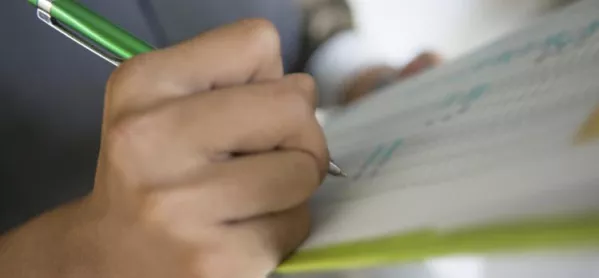- Home
- Need to know: Secondary league tables
Need to know: Secondary league tables

On Thursday, schools will be able to compare their GCSE performance with other schools across the country, based on finalised data from last summer’s results.
On the same day, multi-academy trusts (MATs) will also be judged in league tables.
How will secondary schools be judged in the league tables?
Schools used to be judged on how many of their pupils achieved five A* to C GCSE grades. But now the government uses new measures - Progress 8 and Attainment 8 - to judge secondaries.
Schools are given a score for Progress 8 - which came into effect for all schools for the 2016 GCSE results - that now takes into account the achievements of pupils of all abilities in eight subjects.
The measure has been deemed to be fairer, but there are still some teething problems. For example, schools with large numbers of lower-ability pupils are still disproportionately penalised by it.
Last summer, the DfE said it would make a change to the Progress 8 methodology following mounting pressure from schools. But this will only come into effect for the 2018 GCSE results.
The government has said it will make sure that Ofsted, regional schools commissioners and local authorities are aware of the impact of pupils with extremely negative scores - and it will ensure that it is taken into account when a school is below the floor standard or coasting.
What does a Progress 8 score mean?
A school’s Progress 8 score will normally fall between -1 and 1. The national average is 0.
Based on these scores, a school will be placed in one of five categories in the national league tables: well above average, above average, average, below average and well below average.
A school will be deemed to be below the floor standard if it achieves a Progress 8 score below -0.5.
And a secondary school will be classed as coasting if:
- its Progress 8 score was below -0.257 in 2017 and,
- its Progress 8 score was below -0.256 in 2016 and,
- fewer than 60 per cent of pupils achieved five A*-C grades in five GCSEs in 2015, including English maths, and less than the national median achieved the expected progress in both English and maths
Are any other accountability measures used?
Progress 8 is the headline secondary school accountability measure - but there is a range of other measures included in the performance tables.
Schools are also given an Attainment 8 score, based on how well pupils performed across eight subjects. English and maths are compulsory - and then there is a choice of three English Baccalaureate (EBacc) subjects and three other approved qualifications.
They will also be measured on the percentage of pupils who achieved a grade 5 - which is a high C or low B in the old system - or above in last year’s new English and maths GCSEs.
And the controversial EBacc still features in the secondary school performance tables - despite fears from the sector about whether schools would be able to maintain a broad and balanced curriculum.
Both the percentage of pupils studying EBacc subjects - English, mathematics, history or geography, the sciences and a language - and the percentage of pupils achieving a grade 5 and above (or a grade C and above) in the five core subjects at GCSE will be included in the league tables.
But the DfE intends to change the EBacc attainment measure to an average point score - which will measure pupils’ point scores across the five EBacc subjects.
The average point score, which will not appear in league tables until October, will be introduced to ensure the achievements of all pupils are recognised, not just those at particular grade boundaries.
Will the performance of MATs also be looked at?
Government tables will also rank the performance of MATs that run at least three schools which have been established for at least three years - at key stages 2 and 4.
At KS2, the data will compare the progress measures for reading, writing and maths.
And at KS4, MATs will be compared under the Progress 8 measure.
Last year, data showed that two-thirds of MATs had Progress 8 scores below the national average.
But the government insisted that the data, based on the 2016 GCSE results, did not take account of the historic poor performance of schools that became sponsored academies.
It is also expected that the league tables will look at how MATs with higher percentages of low-income pupils perform - as well as looking at the type of academies in the MATs.
This is the third time that the government has published MAT league tables - but it is only the second time they have published them in January alongside the secondary school league tables.
Want to keep up with the latest education news and opinion? Follow Tes on Twitter and Instagram, and like Tes on Facebook
Keep reading for just £1 per month
You've reached your limit of free articles this month. Subscribe for £1 per month for three months and get:
- Unlimited access to all Tes magazine content
- Exclusive subscriber-only stories
- Award-winning email newsletters



